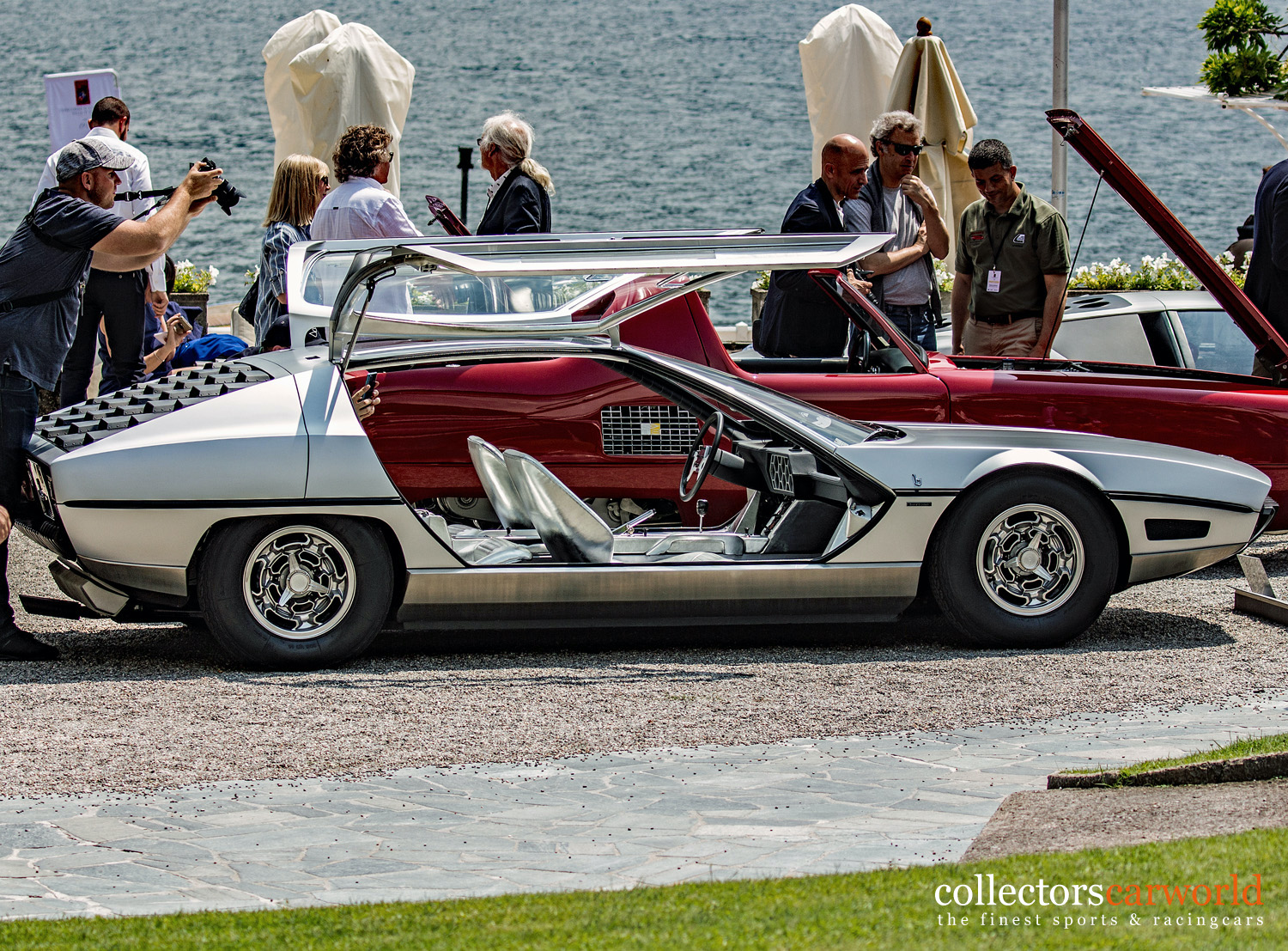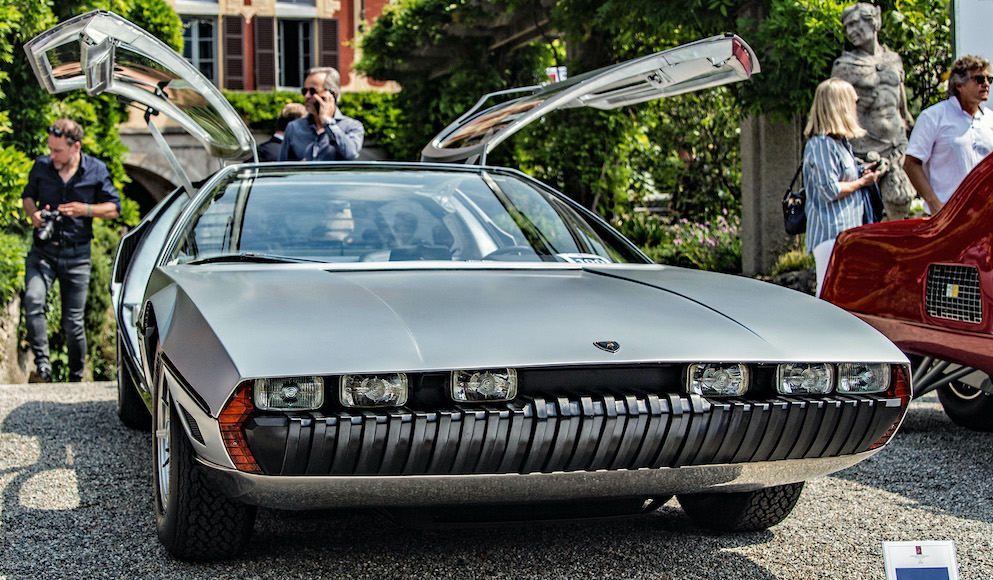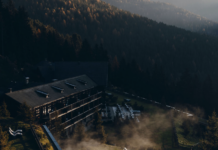Exactly a year after stunning the world with the Miura, Bertone and Lamborghini returned to Geneva in 1967 with the equally stunning Marzal show car. Again styled by Marcello Gandini, the striking machine was to some extent a four-seater version of the mid-engined Miura but with dramatic new lines and a bespoke engine.
What the Marzal shared with the Miura was the box-section steel chassis that had been first shown to the public at the Turin show in 1965. The only real change was a slight increase of the wheelbase. Suspension was by double wishbones, coil springs and telescopic shock absorbers. British sourced Girling disc brakes were used on all four corners. The transverse five speed gearbox was also directly lifted from the Lamborghini supercar.
In order to make room for a second row of seats, the Marzal could not use the same V12 engine. Instead, Lamborghini’s engineers fitted the prototype with a unique straight six. Displacing just under 2 litres, it was effectively the V12 cut in half. Breathing through three twin-choke Weber carburettors, the compact unit produced a very impressive 175 bhp. The engine was mounted behind the rear axle, angled forward 30 degrees for a better weight balance.

Find out more on ultimatecarpage.com
Named after a strain of fighting bull, the Marzal offered Bertone’s new chief designer Marcello Gandini the first opportunity to fully step out of the shadow of Giorgietto Giugiaro, who still had had a hand in Gandini’s earlier designs including the Miura. This was clearly reflected by the end result; the Marzal was a far more angular and futuristic design compared to the classically elegant Miura.
Thanks to the location and configuration of the engine, the overall design had nice proportions despite the addition of an extra row of seats. The car’s most striking feature is the very airy cockpit with unusually large glass surfaces and huge gullwing doors. Feruccio Lamborghini reportedly was no fan of all this glass as it would ‘offer no privacy: a lady’s legs would there for all to see’. Bertone understandably developed an air-conditioning system specifically for the car.
The car’s sharp lines are complemented by angular forms throughout the design. The nose, for example, sported six square headlights and the rear deck consisted of square aluminium slabs riveted together. The luxuriously appointed interior featured a sizeable dashboard and centre console dominated by hexagonal sections. The same theme is used throughout the cabin from the steering wheel centre and the seat cushions.
After its Geneva debut, the Marzal was famously demonstrated by Prince Rainier during the 1967 Monaco Grand Prix. The show car received universal acclaim and in 1968 the exterior design was used for the V12-powered Espada 2+2 GT. This did use a more conventional front-engined layout and as a result the six cylinder engine was not used again. The Marzal was also the popular subject of several die-cast and model kits.
Bertone retained the spectacular show car and only brought it out for special occasions. Unfortunately the company’s recent financial difficulties have forced the Italian coach-builder to sell some of its most iconic machines. Among them was the Marzal, which was offered in RM Auctions’ inaugural Villa d’Este sale in May of 2011 along with a selection of other Bertone show cars. It turned out to be one of the auction’s top sellers, finding a new owner for just over 1.5 million Euro.
 About our photographer Rainer Selzer
About our photographer Rainer Selzer
Rainer Selzer is always ready for a big shot and is focused on historic motorsport.
He is working with us for over three years and visits motorsport events, classic car meetings or car museums. Follow him on instagram @rs65photos or visit his homepage www.rs65photos.com for more!
Report by Wouter Melissen / ultimatecarpage.com
Photos by Rainer Selzer / collectorscarworld.com and rs65photos.com











